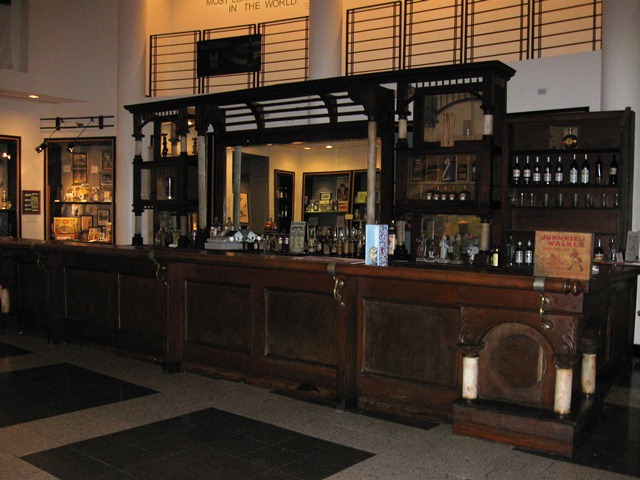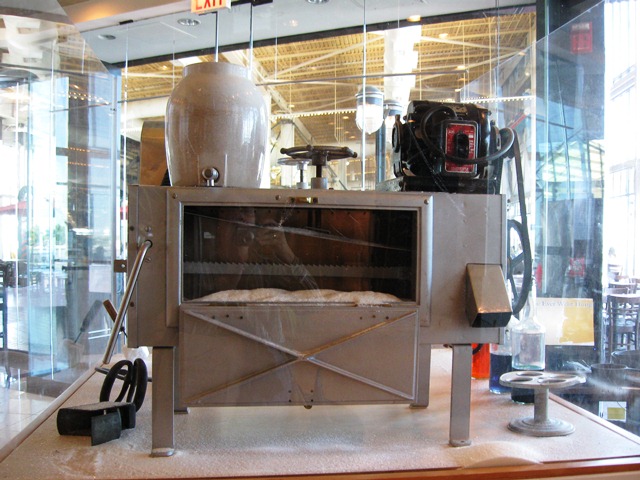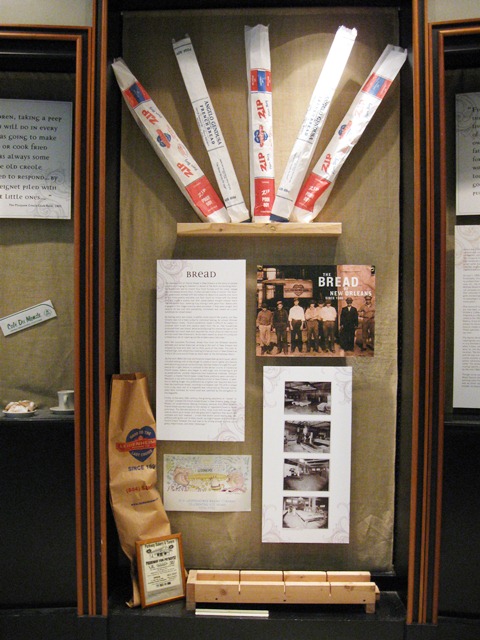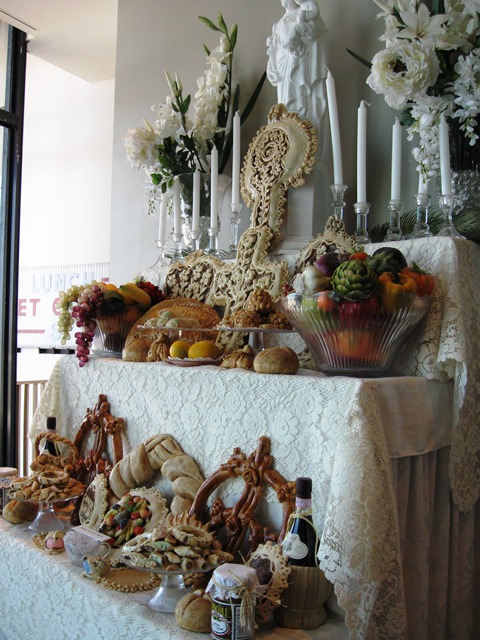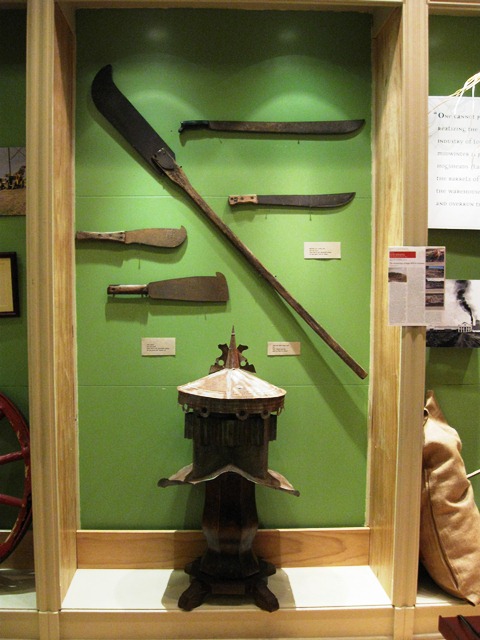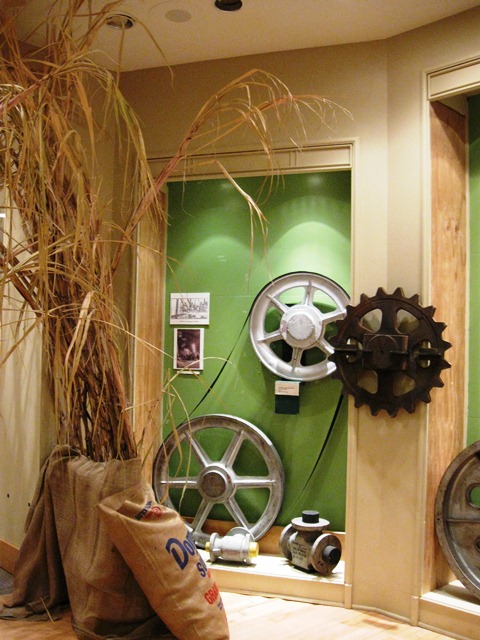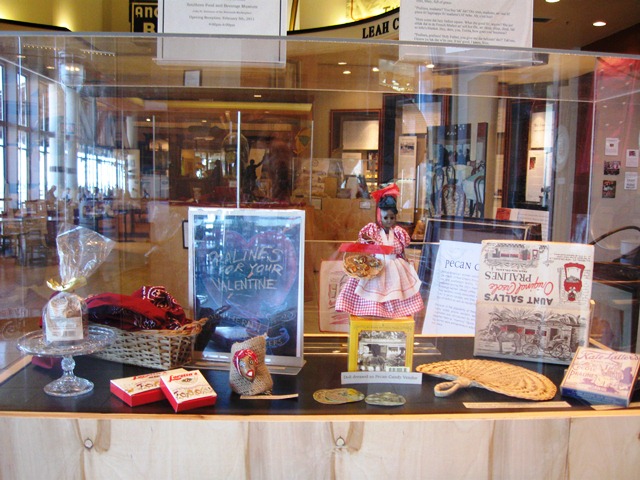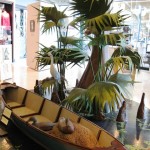 Nowhere is food and drink as important as in New Orleans, LA. People spend their lives talking about food and drink; others spend their lives eating and drinking and most south Louisianans do both.
Nowhere is food and drink as important as in New Orleans, LA. People spend their lives talking about food and drink; others spend their lives eating and drinking and most south Louisianans do both.
New Orleans is home to the Southern Food and Beverage Museum (SFBM) which celebrates food and drink of all the many cultures that combine to make the southern way of life unique. The museum is housed in the Riverwalk, at the end of the food court, and is home to many permanent exhibits. These exhibits include the Seafood Industry, Sugar Industry, St. Joseph Altar, Hurricane Katrina items and many more. It would take almost a full day to see and enjoy everything the museum has to offer.
One of the major pieces housed in the museum is the original Bruning’s Restaurant bar, donated by the Bruning family. The sixteen foot bar survived both Hurricanes Georges and Katrina while the restaurant was destroyed with each hurricane and is no longer operating. Bruning’s was the third oldest restaurant operating in New Orleans. Only Antoine’s and Tujagues, both in the French Quarter, predated Bruning’s. The bar was built between 1852 and 1871 and originally housed in Bruning’s Restaurant located on Claiborne Avenue in what was the town of Carrollton. In 1859, Bruning moved the restaurant to the resort area of Lake Pontchartrain where it remained until Hurricane Katrina.
Another major exhibit is the La Galerie d’Absinthe. Absinthe is a strong herbal liqueur with an alcohol content ranging from 50% to 75%. The drink was first prepared in the 17th century for one of the leading ladies in the French Court. At that time New Orleans was known as the little Paris and the drink soon found its way to the city. Traditionally the liqueur is served with ice water and a cube of sugar. The sugar cube is placed on an absinthe spoon, a decorative spoon with slots, and the water is drizzled over the sugar cube into the absinthe glass. It is said the sugar takes the bitter edge off the absinthe. Absinthe was banned in the US in 1912 due to the belief it was a drug similar to opiates. Today there is a resurgence of Absinthe drinkers. The SFOBM now houses a large private college of Absinthe items including glasses and spoons.
An item that brought back childhood memories was the vintage ice machine used to make snowballs. Growing up, we had a neighborhood grocery where snowballs were sold during the summer. Looking at that machine, I could almost taste and smell the various flavors of the syrup used. The reason the snowballs were so good, was that the ice was not crushed; it was like powdered snow – hence snowballs. As I write this, I can taste the sugary concoction melting on my tongue.
Po-boys and Po-boy bread also has a place in the museum. They even have a loaf cutter allowing each po-boy to be the exact size. Once again, memories came flooding back of going to the city with our parents and having a po-boy at Mother’s. My favorite being the Debris, made from the shavings of the roast beef. Mother’s is still in operation and packs in the customers. At times the line winds down the street. Po-boys have an interesting history relating to the streetcar strike of 1929. Bennie and Clovis Martin, former streetcar operators, owned a sandwich stand in the French Market. They made a promise to feed any member of Division 194 until the strike ended. Whenever they saw a member coming, they would say “here comes another poor boy”. The sandwich served became known as the poor boy, later shortened to po-boy.
You enter the Seafood Industry exhibit through a Shrimp Boat showing just how important this industry is to South Louisiana. Shrimping is a way of life along the Louisiana Gulf Coast. As early as 1774 shrimp were being harvested from Louisiana waters south of New Orleans. Until the 1800s, shrimp was a locally sold product. After Chinese immigrants introduced drying platforms and can liners improved, shrimp began to be exported. Today in South Louisiana, shrimp are boiled, fried, stewed, stuffed, sautéed, and put in sauces. Yet, what was once a way of life, handed down from parent to child, may be lost because of changes brought by government, industry, foreign markets, and the BP Oil Spill. According to the LSU Ag Center, Louisiana is the largest supplier of domestic seafood in the continental United States and everyone in South Louisiana hopes it will remain so. Of course Shrimp is not the only seafood in the exhibit, oysters, crawfish, and crabs are also important industries in South Louisiana.
The St. Joseph Altar has a place of honor in the New Orleans Italian community. The museum honors this tradition with its own St. Joseph Altar. Sicilians believe that St. Joseph saved them from a famine and showed their gratitude by preparing an altar of food each year for the less fortunate. This custom came to New Orleans with the Sicilian immigrants and became part of the culture to this day.
No food and beverage exhibit in New Orleans would be complete without a tribute to the many restaurants and chefs in New Orleans. SFBM is no exception having various menus and items from restaurants as well as a tribute to Leah Chase.
The highlight of the museum, for me, was the original bar from Bruning’s Restaurant on Lake Pontchartrain. Bruning’s was a favorite of John’s Godfather, C.O. Dupuy, and we spent many an enjoyable evening with friends, food, drink, and sights on Lake Pontchartrain. For us that is what the Food and Beverage Museum captures – the life and times of New Orleans and other southern cities.
Note: The museum is moving to 1504 Oretha C. Haley Blvd, New Orleans, LA 70113, in the latter part of 2013. As of March 18, 2013 the museum is closed and preparing to move to its new location.

